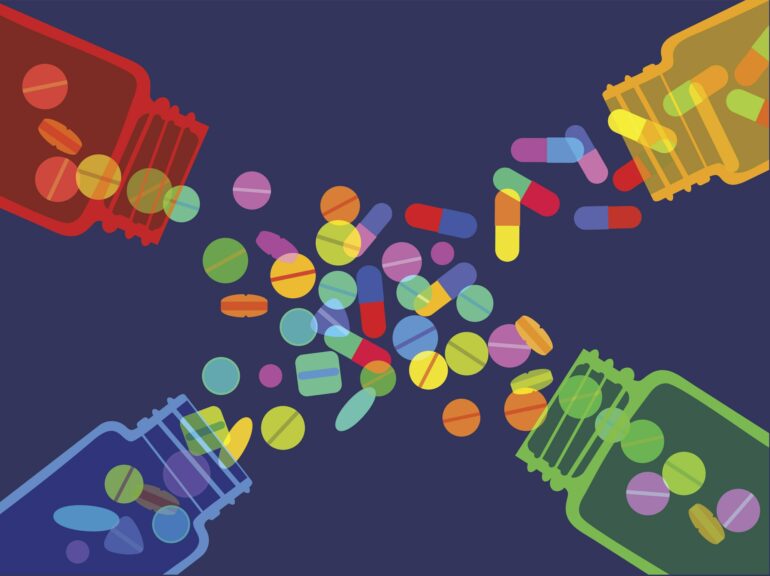Discovering new ways to use existing drugs can come about intentionally or by chance.
Sometimes physicians or patients notice an unanticipated beneficial effect from a drug. One example is sildenafil, a drug originally developed to treat severe chest pain from coronary artery disease. While sildenafil failed clinical trials, researchers noticed that one of its side effects was induced erections. This led to its successful rebranding as the erectile dysfunction drug Viagra.
Most of the time when drugs are repurposed for diseases or conditions they were not originally intended for, it’s done deliberately. As scientists raced to develop treatments for COVID-19, drug repurposing came into the spotlight for reasons good and bad.
As a researcher focused on drug discovery and development, I have seen the potential of repurposing and the challenges it faces. While finding new uses for drugs that have already been tested for safety and approved by the FDA can substantially reduce the time and cost of development, financial and logistical barriers can make it difficult to get to market.
The success of thalidomide
When repurposing is successful, a drug that is ineffective or harmful for one condition can be lifesaving for others.
One such drug is thalidomide, first approved as a morning sickness treatment. It gained notoriety in the late 1950s when it caused birth defects in an estimated 10,000 infants worldwide, resulting in changes in drug regulation and development that included increased developmental toxicity testing. Thalidomide was globally banned by the end of the 1960s.
In the 1990s, however, researchers discovered that thalidomide inhibits angiogenesis, or the growth of new blood vessels that deliver nutrients and oxygen to tumors. Its new use as a treatment for a blood cancer called multiple myeloma ultimately saw clinical and commercial success. This led to the development of improved versions of the drug that treat cancer with reduced side effects.
Repurposing generic drugs could offer a cheaper and faster way to develop new treatments.
Scientists have continued to find other therapeutic uses for thalidomide.
When researchers discovered that thalidomide targets a molecule in the body that marks other proteins for destruction, they leveraged this function into an emerging technology called PROTACs. Many drugs work in the body by inhibiting a particular target that produces an unwanted effect, typically in a way that is reversible and temporary. PROTACs, on the other hand, are a type of drug that can destroy the target altogether. This potentially increases the effectiveness of the drug and reduces the chance of drug resistance.
An example is bavdegalutamide, a PROTAC that combines thalidomide with an inhibitor typically used to treat prostate cancer. This inhibitor works by blocking a target that supplies the tumor with hormones that help it grow. An…
